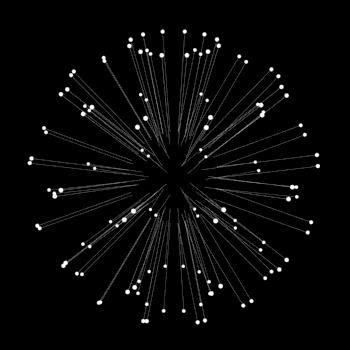Circle A has a center at #(3 ,5 )# and an area of #78 pi#. Circle B has a center at #(1 ,2 )# and an area of #54 pi#. Do the circles overlap?
2 Answers
Yes
Explanation:
First, we need the distance between the two centres, which is
Now we need the sum of radii, since:
Proof:
graph{((x-3)^2+(y-5)^2-54)((x-1)^2+(y-2)^2-78)=0 [-20.33, 19.67, -7.36, 12.64]}
These overlap if
We can skip the calculator and check
Explanation:
Circle area is of course
We have squared radii
and squared distance between the centers
Basically we want to know if
The squared lengths are all nice integers and it's pretty insane that we all instinctively reach for the calculator or computer and start taking square roots.
We don't have to, but it requires a little detour. Let's use Heron's formula, call the area
That's already better than Heron. But we continue. I'll skip some tedium.
That's nicely symmetric, as we would expect for an area formula. Let's make it less symmetric looking. Recall
Adding,
That's a formula for the squared area of a triangle given the squared lengths of the sides. When the latter are rational, so is the former.
Let's try it out. We're free to assign the sides however we like; for hand calculation its best to make
Even before calculating it any more, we can see we have a positive
If we had gotten an negative value, an imaginary area, that's not a real triangle, so non-overlapping circles.


